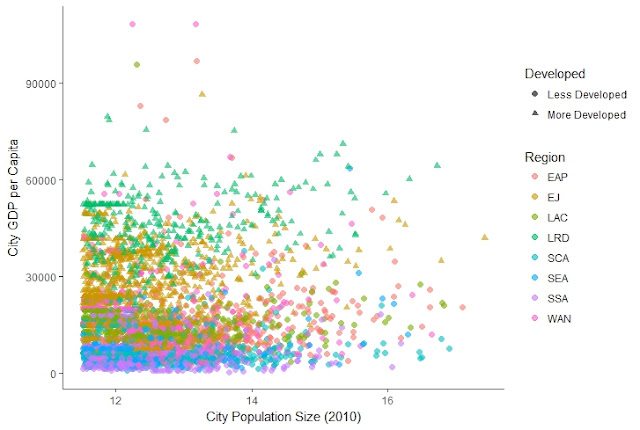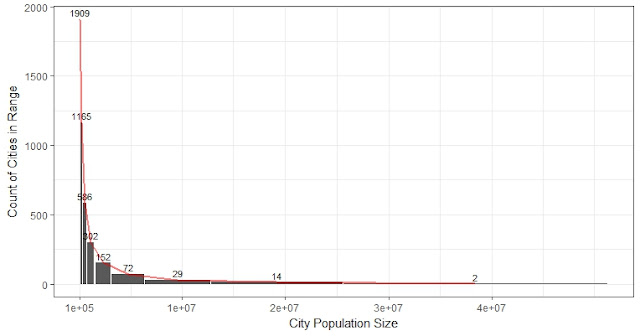City population, growth rate, and income (GDP per capita)
What the scatterplots can tell
These two scatterplots are messy at first glance, but the more I look at them the more stories I could see. Of course, maybe these findings can be illustrated separately in better ways.
#1. City GDP per capita vs Log City Population Size
City population has been put on log scale since it is too skewed. Without log (as in the 3D illustration below) all the cities are clustered on the left except the very large cities.
The observations are:
- The first observation is that there is no pattern in the data points, meaning GDP per capita in the world correlates very weakly with the size of the city.
- All the cities in the more developed regions (marked as triangles) are on the top. This is not surprising as the y-axis is income level (GDP per capita). What is interesting is that the distributions of population size for the developed region and developing region seem very close.
- There is a natural stratification by the 8 geological regions. This is the 3rd finding: the main difference among regions besides their geological location is their income level.
A 3D view (Population is on the original scale, still colored by region):
#2. City Population Growth Rate vs. Population Size
The population size is on log-scale.
- The growth rate of city population size clearly does not associate with city population size
- A little bit hard to observe, but most triangles (cities developed region) are around zero: A clear difference in population growth rate between developed and developing countries.
- Again there is a stratification by color, indicating that population growth rates vary significantly across the eight regions. Cities in developing countries (warm color) generally have higher population growth rate.
A 3D view (Population is on original scale):







Comments